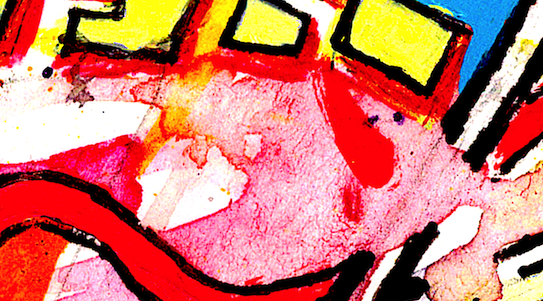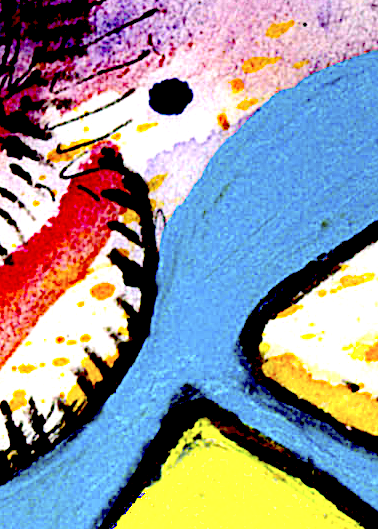IMPROTECH Paris - Αθηνα 2019
Detailed program
Thursday Sept. 26
Friday Sept. 27
Saturday Sept. 28
Sunday Sept. 29

Friday sept 27 - Concert
Onassis STEGI, 20:00 - 22:30
Bernard Lubat, Sylvain Luc, Marc Chemillier, Gérard Assayag
Lubax Lux
Piano, guitar, Omax & dJazz computer systems
Lara Morciano
Philiris
For piano, motion capture, transducers and real-time electronics
George Lewis, Evan Parker, Mari Kimura, Stylianos Dimou, Voyager
Voyager: Interactive Quintet (2007/2019)
Trombone, saxophones, violin, live electronics, Voyager interactive pianist.
Mari Kimura, Pierre Couprie, Gyorgy Kurtag, Hugues Genevois
A Close Encounter of the Seventh Kind
Violin, live electronics, Handsonic, Koncertdoboz
Rémi Fox, Jérôme Nika
C’est pour ça
Saxophones and DYCI2 computer system

Bernard Lubat, Sylvain Luc, Marc Chemillier, Gérard Assayag
Lubax Lux
Bernard Lubat, piano, voices
Sylvain Luc, guitar
Marc Chemillier : dJazz computer systems
Gérard Assayag : OMax computer system
Now is the time for Lubax style improvisation between man and machine, a duo created by Bernard Lubat and Ircam / EHESS researchers Gérard Assayag and marc Chemillier, extended tonight with guest musician Sylvain Luc, one of the greatest guitar player in his generation. Computer systems (OMax, dJazz) capable of « listening » carefully, capturing the game of improvising musicians in real time, in order to produce new improvisations combining imitations and transformations... In direct contact with the human performers, and starting from nothing, the computer learns how to play, making steady progress toward musical expertise, tirelessly increasing the amount of structured information stored in its database, while human operators are still in control of global strategies (when to choose silence, responsory or heterophony, scarcity or complexity etc.)
Lara Morciano
Philiris
For piano, motion capture, transducers and real-time electronics
Lara Morciano, composer, piano
Jose-Miguel Fernandez, programming, live electronics
In Philiris the research is based on the correspondence between the gesture and the characteristics of the sound signal as well as the synchronization and interaction between the hands movements of the performer and various sound processes.
The work is composed of different movements, each one conceived as an individual sound universe. The name refers to a family of butterflies which inspires some parts such as the light movements of the wings in the air produced by the pianist’s fingers as well as the concept of metamorphosis (from the state of larvae to that of beautiful butterfly) by different processes of transformation evoking the piece's changes of color and atmosphere.
The prevailing idea of the ambiguity of the double explores the cohabitation of a tempered world with that of a virtual resonant instrument completely detuned ; this virtual instrument is treated and diffused by the transducers, which recreate and diffuse the sound synthesis manipulated with the motion capture directly into the piano. Chords played in the air are triggered by the motion tracking of both hands ; the acoustic piano chords are captured to make synthesis in real time that prolongs the tempered sounds of the instrument while creating beats between the neighboring microtonal frequencies produced by the virtual piano. The improvised sections based on timbral exploration inside the soundboard produce unusual noisy sounds, which are associated with concatenative sound synthesis driven by sensors, setting up a situation in which the instrument and electronic are interdependent and interactive.
George Lewis, Evan Parker, Mari Kimura, Stylianos Dimou
Voyager: Interactive Quintet (2007/2019)
George Lewis : trombone, laptop
Evan Parker: saxophones
Mari Kimura: violin/MUGIC™ sensor
Stylianos Dimou: live electronics
Voyager : interactive computer pianist
The performers are engaged in live, completely improvised dialogue with Voyager, computer-driven, interactive "virtual improvisor" software designed by Lewis, who has been working with musical computers, or “creative machines,” since 1979. The computer performs on a software-controllable acoustic piano, the Yamaha DisklavierTM. Lewis’s program uses its analysis of both musicians’ performances to guide its generation of complex responses, while also establishing its own independent musical behavior. The system does not need real-time human input to generate music; it can also take initiatives on its own. In this performance, the improvised musical encounter is portrayed as a sonic negotiation among musicians, some of whom are people and others not.
The philosopher Arnold I. Davidson has written most cogently on the issues involved: “Listening to freely improvised music cannot be a passive experience. Neither we nor the musicians know what to expect, and our programmed habits of listening may interfere with our ability to listen, and so reveal themselves to be prejudices that narrow our space of freedom. Responsibility begins in response, and to respond to this music we have to learn to hear its intelligibility, to participate in its conversation. Such participation requires continuous awareness, attention, vigilance, and practices of self-transformation that are necessary to the creation of new forms of freedom. The ethics of self-formation and the politics of social interaction come together in these improvisations.
When one of the performers is a creative machine, as is the case tonight, our habits and prejudices are still further challenged. Don’t we know how a machine must think, must sound? What we say about human/computer interaction is all too frequently dictated by an already determinate picture of the boundaries of the possible and the impossible. If we detach ourselves from this picture so that we can begin to listen, perhaps we will come to experience these creative machines as posing and provoking the challenges of self-transformation and social meaning from yet another perspective. And then we will be in a position to realize that multiplication of perspectives means multiplication of possibilities.”
Mari Kimura, Pierre Couprie, Gyorgy Kurtag, Hugues Genevois
A Close Encounter of the Seventh Kind
Mari Kimura: violin / MUGIC™ sensor
Pierre Couprie: Live Electronics
György Kurtág: Handsonic
Hugues Genevois: Koncertdoboz
In musicology, a close encounter is an event in which a person witnesses an unidentified musical object. This terminology and the system of classification behind it were first suggested in cyber-musicologist Leonid S. Gonionski's 1958 book The CE Experience: A Scientific Inquiry. Categories beyond Professor Gonionski's original three have been added by others researchers and successors. It would be long and tedious to detail all these categories. Let's just say that a close encounter of the seventh type occurs when the audience is invited to attend the creation of a musical hybridisation between real humans by scientific methods and technological means.
Rémi Fox, Jérôme Nika
C’est pour ça
Rémi Fox, Saxophones, Electronics
Jérôme Nika, DYCI2 computer system
In the course of a process of "digital lutherie", artistic collaborations are inseparable from the technological aspects. Thus, Rémi Fox has been involved since the very beginning in the creation of the DYCI2 generative agents. The name of the duo, C’est pour ça [That’s why], is a nod to its early days, when the performances were intended to be didactic rather than purely creative, with a purpose of tests or demonstration. This "digital lutherie" has now reached a stage of maturity sufficient to serve as a basis for a purely musical research, combining "meta-composition" and free improvisation: composing the "musical memories" of improvising agents, the structures underlying their musical discourses, their listening and reaction mechanisms, and allowing the form to be generated by pure interaction. C’est pour ça develops an electronic aesthetic while seeking to preserve the organic character of the summoned "memories" (traditional choirs, spoken voice, saxophone playing modes...).
